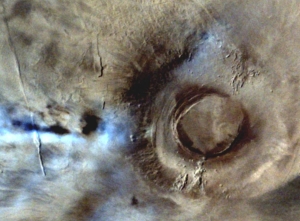Ants in space!
By studying the behavior of eight colonies of ants sent to ISS, scientists have discovered that ants can adapt to weightlessness, though they do not do quite as well as their gravity-bound counterparts.
To start the experiment, a barrier was removed that allowed them to explore a new area. After a few minutes, a second barrier was lifted, expanding the available territory even further. “The idea is to ask the ants to search a small space – and then provide more space and see what will happen when the same number of ants have to use a larger space,” Prof Gordon explained. Equivalent experiments were also run back on Earth, for comparison.
Down on ground level, adding extra space and dropping the “density” of ants caused them to adjust their paths, covering more ground and spreading out much more. In this way, nearly every corner of the container was visited by more than one ant within five minutes. The ants in space still did their best to search, moving out into the expanded area as expected – but they were nowhere near as effective as their counterparts on the ground, which had the luxury of normal gravity.
By studying the behavior of eight colonies of ants sent to ISS, scientists have discovered that ants can adapt to weightlessness, though they do not do quite as well as their gravity-bound counterparts.
To start the experiment, a barrier was removed that allowed them to explore a new area. After a few minutes, a second barrier was lifted, expanding the available territory even further. “The idea is to ask the ants to search a small space – and then provide more space and see what will happen when the same number of ants have to use a larger space,” Prof Gordon explained. Equivalent experiments were also run back on Earth, for comparison.
Down on ground level, adding extra space and dropping the “density” of ants caused them to adjust their paths, covering more ground and spreading out much more. In this way, nearly every corner of the container was visited by more than one ant within five minutes. The ants in space still did their best to search, moving out into the expanded area as expected – but they were nowhere near as effective as their counterparts on the ground, which had the luxury of normal gravity.

